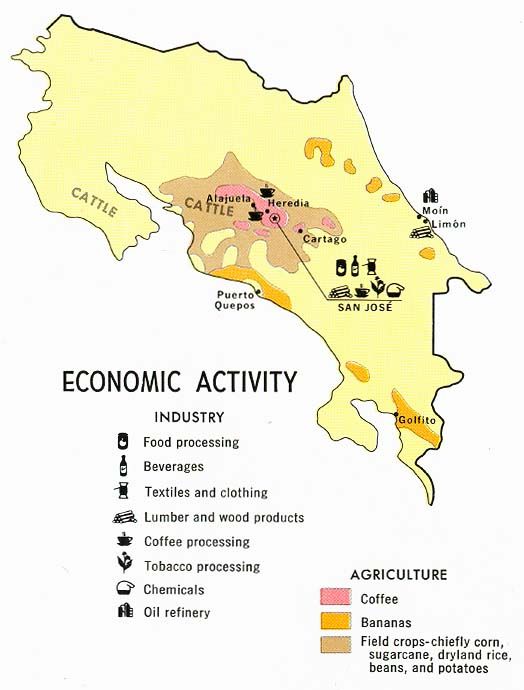Costa Rica’s natural resources are considered to be economically and environmentally significant due to its raw material supplies, as well as its thriving rainforest and productive agricultural fields. For example, in agriculture, the country has around 36 percent of its fertile land (SCALA, 2023), which is used to cultivate products such as bananas, coffee, pineapple, and sugar. Additionally, Costa Rica’s deliberate approach to energy production in hydroelectric power is visible in its use of water resources for hydroelectric power generation (Costa Rica: 100% renewable with hydropower, 2021). Nonetheless, mineral resources are abundant in Costa Rica, contributing to the country’s geological diversity and economic growth. However, Bauxite, manganese, gold, silver, and copper are frequently discovered in the valley of General and Coto Brus and are found near the Nicoya Peninsula of the country (Ouor, 2019). Overall, Costa Rica’s devoted and conscious conservancy of its natural resources not only safeguards its extraordinary biodiversity but serves as a model for other countries for its sustainable development and conservation efforts while establishing a brighter and greener future for generations to come.
The country’s natural resources engage in interrelationships with other countries that benefit the region. For example, Panama and Costa Rica have interrelationships of being a tropical temperature country with a history of cultivating (Natural Resources of Costa Rica, 1926), making sugar particularly popular in Central America. Another example of Costa Rica’s interrelationships is with the United States, which is the region’s largest trading partner and a major source of foreign investment. It is a tourist destination site for U.S. investors and residents, which deepens the connection between both countries (Fitzgerald Haney, 2023). The sugar sector is essential in many ways; it has helped Central America emerge as one of the key sources of prosperity and stability, as well as one of the most important and reliable world market suppliers (Suarez, 1996). As evidence, this demonstrates how successful both countries have been since the 1990s.

Figure 2.
Costa Rica Natural Resources.


